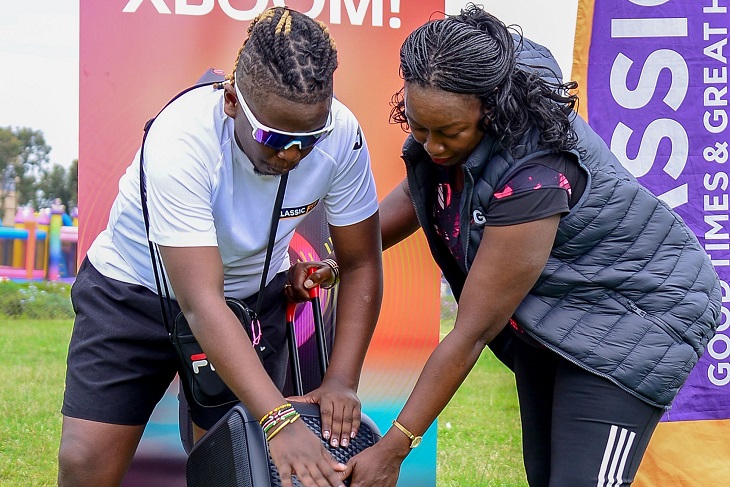New data released today by the World Health Organization (WHO) reveal that countries around the world largely held the lines against further setbacks to malaria prevention, testing, and treatment services in 2021.
According to this year’s World Malaria Report, there were an estimated 619,000 malaria deaths globally last year compared to 625,000 in the first year of the pandemic. In 2019, before the pandemic struck, the number of deaths stood at 568,000.
Malaria cases continued to rise between 2020 and 2021, but at a slower rate in the period between 2019 to 2020. The global tally of malaria cases reached 247 million in 2021, compared to 245 million in 2020 and 232 million in 2019.
In Kenya, malaria cases continued to rise from 3.3 million (3,302,189) in 2020 to 3.4 million (3,419,698) in 2021. Deaths from malaria also rose from 11,768 in 2020 to 12,011 in 2021.
In 2020 malaria in Kenya accounted for 1.1% of all malaria cases across the globe, in 2021 this increased to 1.3%. In 2020 Kenya accounted for 2% of deaths, this decreased to 1.9% in 2021.
Dr. James Dan Otieno, Malaria Technical Officer with WHO Kenya commented on the WMR 2022 Report saying that the Country must take up ownership of the fight towards “zero malaria deaths”; only through this bold leadership will we accelerate efforts to achieve this vision. It is morally unacceptable for Kenyan children and pregnant mothers to die from a preventable disease like malaria.
“We must step up innovations and expand available complement of tools to defeat malaria”, he added.
The case incidence and mortality rates in Kenya continued to increase from 2020 to 2021, although at a slower rate, following an increase in the first year of the pandemic, between 2019 and 2020. For example, case incidence (cases per 1000 population at risk) increased from 59.6 in 2019 to 63.5 in 2020 and increased again to 64.5 in 2021 and the mortality rate (deaths per 100 000 population at risk) increased from 22.2 in 2019 to 22.6 in 2020 and increased again to 22.7 in 2021.
Dr. Ahmeddin Omar, Head of the National Malaria Control Programme with the Ministry of Kenya commented on the findings of the report stating that the report clearly shows stagnation in the progress towards a malaria-free zone and the disease still remains one of the leading causes of illness and death in the African continent. Indeed, the progress on reduction in malaria incidence in Kenya is plateauing while the confirmed cases of malaria increased by 5% in 2021.
Although not on track to reach the Global Technical Strategy 2020 (GTS 2020) milestones for reductions in case incidence of 40% or more, Kenya was one of 15 countries in the African Region to achieve a reduction in malaria case incidence in 2021 compared with 2015. Kenya showed no change in mortality rate in 2021 compared with 2015.
“We are cognizant of the threats facing the fight against malaria and we will continue to work with our stakeholders to invest in newer technologies to tailor interventions at the sub-national level to ensure efficiency and value for resources as we continue with the malaria elimination agenda,” he added.
The RTS, S/AS01 malaria vaccine was recommended by WHO in 2021 to prevent malaria in children living in regions with moderate-to-high P. falciparum malaria transmission. In 2021, approximately 364,000 children were reached with at least 1 dose of the vaccine through pilot introductions in Ghana, Kenya, and Malawi, compared to 344,000 in 2020 and 189,000 in 2019.
Kenya is one of 35 African countries to date that has adopted intermittent preventative treatment of malaria during pregnancy (IPTp) nationally to reduce the burden of malaria during pregnancy. Between 2020 and 2021 the estimated coverage receiving the recommended minimum 3 doses increased to over 30% in Kenya.
In 2021, Kenya pledged $10 million USD to the Seventh Replenishment of the Global Fund to Fight Aids, Tuberculosis, and Malaria, a 67% increase from their Sixth Replenishment pledge in 2019.
The African Region continues to shoulder the heaviest burden of malaria. Globally in 2021, the region accounted for 95% of all malaria cases, equivalent to 235 million cases. Further, the region also accounted for 96% of malaria deaths constituting 593,00 deaths – nearly 80% of all deaths were among children under the age of 5.
In the African Region malaria cases continued to rise from 232 million in 2020 to 234 million in 2021. However, malaria deaths decreased slightly from 599,000 in 2020 to 593,000 in 2021.
The case incidence and mortality rates in the African Region declined from 2020 to 2021, following an increase in the first year of the pandemic, between 2019 and 2020. For instance, case incidence (cases per 1000 population at risk) increased from 225.5 in 2019 to 233.6 in 2020, and then fell to 229.4 in 2021 and the mortality rate (deaths per 100 000 population at risk) increased from 56.3 in 2019 to 60.4 in 2020, and then declined to 58.2 in 2021.
In 2021, four countries in the African Region – Nigeria (26.6%), the Democratic Republic of the Congo (12.3%), Uganda (5.1%), and Mozambique (4.1%) – accounted for nearly half of all malaria cases globally. Four countries accounted for just over half of all malaria deaths globally: Nigeria (31.3%), the Democratic Republic of the Congo (12.6%), The United Republic of Tanzania (4.1%), and Niger (3.9%).










